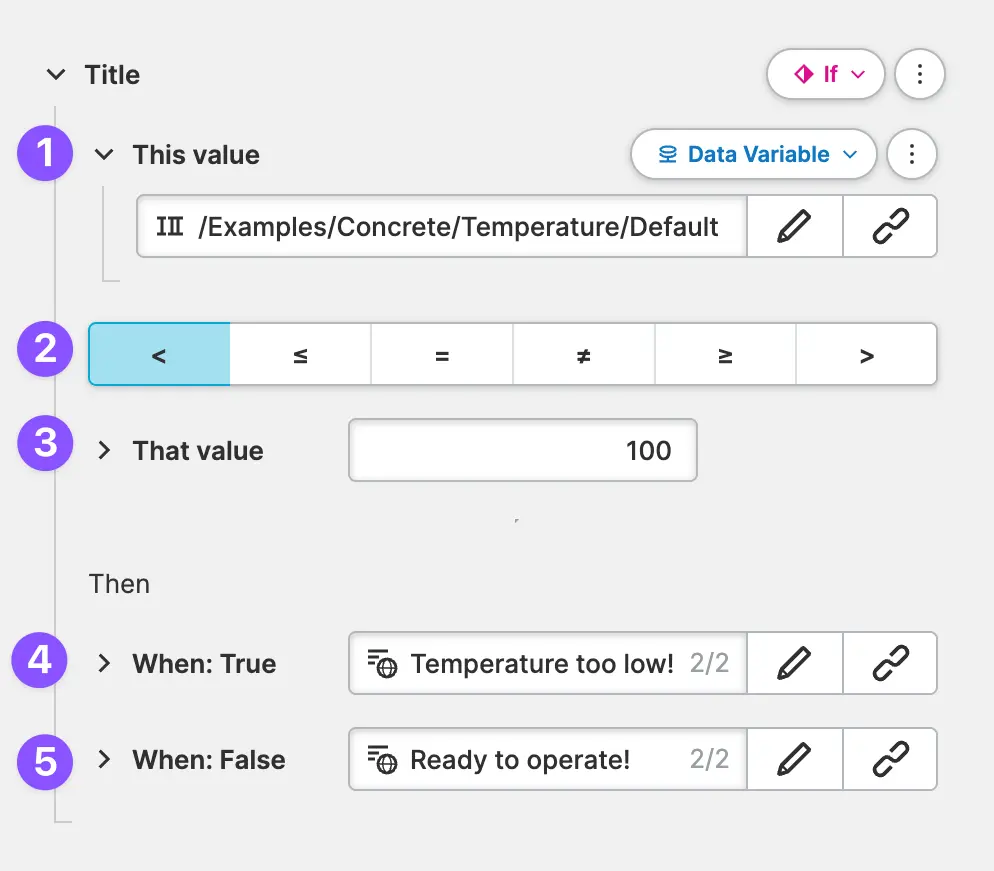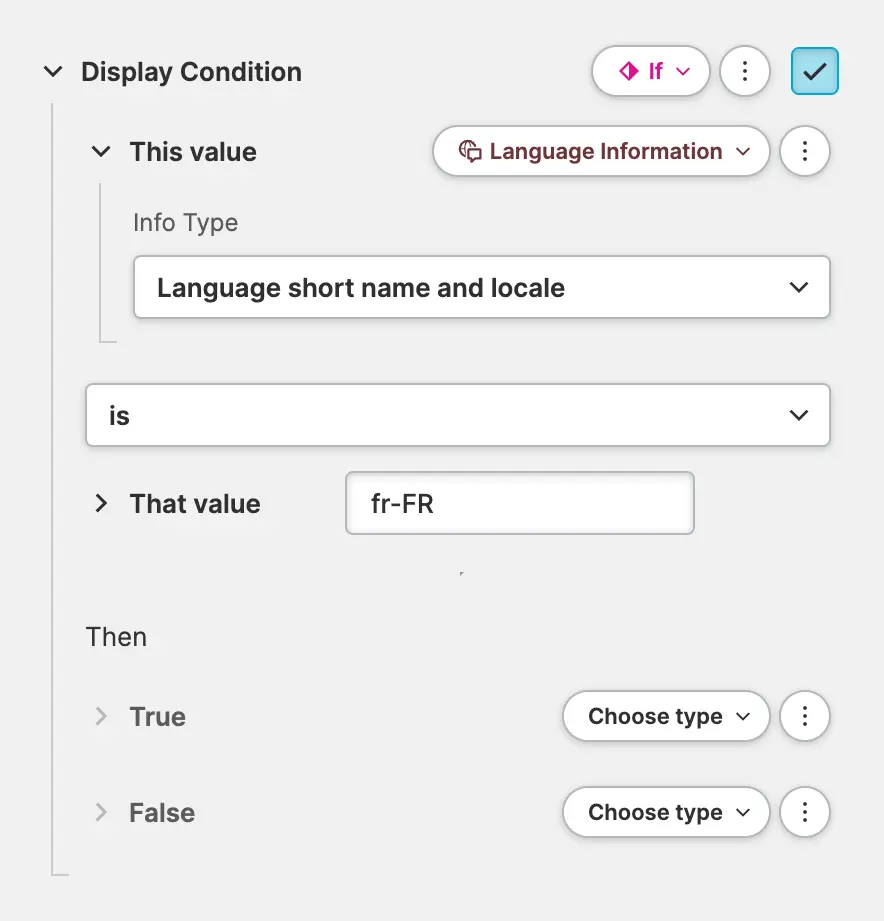If Condition
Use an If condition to solve more complex rules by comparing two values.
For example, you could display a helpful hint when a Data Variable (Dynamic Property) falls below a certain threshold.
- By default, the property returns the boolean value of the evaluated
condition (
trueorfalse). - However, you can specify the values returned when the condition is true or false.
Anatomy
This value
This is the value you want to compare. It is a Dynamic Property, so feel free to compare any type you like. In most of the cases you'll probably use a Data Variable (Dynamic Property).Operator
Describes how the two values will be compared. This will adjust to the type of the variables you compare. In this example we're seeing operators to compare numerical values (less than, less then or equal, …).That value
This is the value with which you want to make a comparison. And yes, it is also a Dynamic Property, so let your imagination run wild.When: True
If the comparison turns out to be truthy this value will be used as the actual value. By default, the value istrue. However, as this property is dynamic, you can use any type you prefer, such as a Data Variable (Dynamic Property) or a Localizable Text.When: False
If the comparison turns out to be falsy this value will be used as the actual value. By default, the value isfalse. Again, you can also use any Dynamic Property that works for you.
Examples
Reacting to a Specific Language
In this example the Language Information should be compared. Since it
returns a String the Comparison Operator switched to
operators that work with textual content.
The condition is applied to the Display Condition which means that we should make sure to set it to a boolean value. In such a situation can simply apply the default values for the falsy and truthy case.
Can you guess what effect this condition has?
Correct, this element will show up whenever the current language is set to French.


